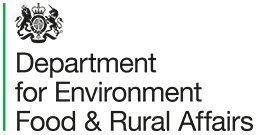Glass frit binder for assembly of gas lasers: exemption for lead
Overview
The Restriction of the Use of Certain Hazardous Substances in Electrical and Electronic Equipment Regulations 2012 (the RoHS regulations) restricts the use of 10 hazardous substances in electrical and electronic equipment (EEE), with a view to contributing to the protection of human health and the environment, including the sound recovery and disposal of waste.
Industry can apply for exemptions to allow the supply of products using one or more of the restricted substances above the threshold limits set down in the RoHS regulations where specified criteria are met. Applications for exemptions are made to the Secretary of State under regulation 6 of the Hazardous Substances and Packaging (Legislative Functions and Amendment) (EU Exit) Regulations 2020 (the 2020 regulations). Any exemption that is granted can be used across industry, not just by the business that applied for the exemption. Exemptions are granted where it is determined that the necessary criteria have been met following a detailed evaluation conducted in accordance with regulation 5 of the 2020 regulations.
Following the UK’s withdrawal from the EU, the function of granting, renewing and revoking exemptions were, in relation to Great Britain, transferred to the Secretary of State by the 2020 regulations, using powers in section 8 of the European Union (Withdrawal) Act 2018 (the Withdrawal Act).
Part of the evaluation process is an 8-week consultation to collect contributions from stakeholders.
A request for renewal for an exemption was submitted for lead in glass frit of X-ray tubes and image intensifiers and lead in glass frit binder for assembly of gas lasers and for vacuum tubes that convert electromagnetic radiation into electrons. The exemption entry covers the use of lead in glass frit in several technologies, such as X-ray tubes, image intensifiers, gas lasers and vacuum tubes that convert electromagnetic radiation into electrons, however, the applicant only use lead in glass frit in precision lasers, where lead oxide in glass frit is used to connect borosilicate glass to metal pieces of precision lasers.
The requested duration of the exemption is for 7 years and according to the application it would be expected to lead to the introduction of 1.4kg of lead to the GB market annually. The applicant states that no suitable substitutes have been verified to meet the technical performance required.
The exemption covers applications under category 9ind (monitoring and control instruments in industry) of electrical and electronic equipment (EEE), as covered in the 2012 RoHS regulations.
Audiences
- Environmental professional services
- Manufacturing Industry
- Retail Industry
Interests
- Chemicals and pesticides
- Consultations
- Waste and recycling

Share
Share on Twitter Share on Facebook